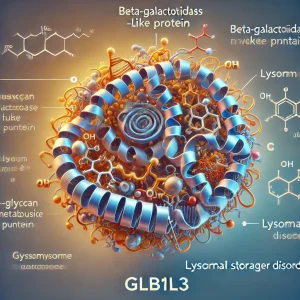Introduction
Anti-GLB1L3 antibodies are valuable tools in biomedical research, aiding in the study of GLB1L3, a member of the glycosyl hydrolase family. GLB1L3 has been implicated in various cellular processes, including lysosomal function and neurodegeneration. Understanding its biological role can contribute to advancements in cancer research, genetic disorders, and neurobiology. This article explores the applications of anti-GLB1L3 antibodies in laboratory research and their relevance in disease studies.
To provide accurate and research-backed insights, this article includes multiple hyperlinks to authoritative educational and governmental resources.
What is GLB1L3?
GLB1L3 (Beta-Galactosidase-1 Like 3) belongs to the glycosyl hydrolase 35 family. Though less characterized than other beta-galactosidases, emerging research suggests its involvement in glycan metabolism and potential links to lysosomal storage disorders.
For more information on glycosyl hydrolases, visit the National Library of Medicine and the NCBI Gene Database.
Applications of Anti-GLB1L3 Antibodies
Anti-GLB1L3 antibodies are used in various laboratory techniques, including:
- Western Blotting (WB) – Detecting GLB1L3 expression in tissues and cell lysates.
- Immunoprecipitation (IP) – Isolating GLB1L3 protein and its interacting partners.
- Immunohistochemistry (IHC) – Examining GLB1L3 expression in pathological samples.
- Immunofluorescence (IF) – Visualizing GLB1L3 in subcellular structures.
For antibody validation and databases, refer to the NIH Antibody Registry and the Protein Atlas.
The Role of GLB1L3 in Cancer Research
Recent studies indicate that GLB1L3 may be associated with tumor progression and metabolic adaptations in cancer cells. Research published in Cancer Research suggests that GLB1L3 expression is altered in certain malignancies, contributing to lysosomal dysfunction and altered glycosylation (Cancer.gov) (PubMed Central).
For a comprehensive review of cancer metabolism and lysosomal involvement, refer to the National Cancer Institute.
GLB1L3 in Neurological Disorders
GLB1L3’s role in lysosomal function suggests a potential link to neurodegenerative diseases such as Alzheimer’s and Parkinson’s. Deficiencies in glycosyl hydrolases have been reported in lysosomal storage disorders, leading to impaired cellular clearance mechanisms.
For detailed insights, visit the National Institute of Neurological Disorders and Stroke and PubMed.
GLB1L3 and Lysosomal Storage Disorders
Lysosomal storage diseases (LSDs) result from enzyme deficiencies that impair the breakdown of macromolecules. Beta-galactosidases, including GLB1L3, may play an essential role in glycan degradation, and defects in these enzymes contribute to disorders such as GM1 gangliosidosis and Morquio B syndrome.
For more information, refer to the Genetic and Rare Diseases Information Center and the Centers for Disease Control and Prevention.
Future Therapeutic Potential of Anti-GLB1L3 Antibodies
Given its involvement in metabolism and lysosomal function, anti-GLB1L3 antibodies may serve as diagnostic and therapeutic tools. Future research aims to:
- Explore GLB1L3 as a biomarker for cancer and neurodegeneration.
- Investigate its role in metabolic and lysosomal storage disorders.
- Develop antibody-based therapies targeting GLB1L3.
For ongoing clinical trials and research, visit ClinicalTrials.gov and NIH Research Portfolio.
Conclusion
Anti-GLB1L3 antibodies are indispensable in the study of glycosyl hydrolases and lysosomal function. As research progresses, understanding GLB1L3’s role in cancer, neurological disorders, and metabolic diseases will provide new insights into potential therapeutic strategies.
For further information on GLB1L3 and its biomedical relevance, consult resources like the National Institutes of Health, PubMed, and the NCBI Gene Database.


